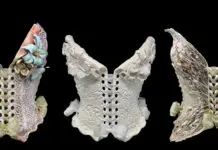Ask any number of Oklahomans in a given year who has the better football team between the Sooners and Cowboys, and you’re going to get a number of strong opinions, but you’d be foolish to assume one’s allegiance without the aid of school-themed apparel. It’s the same with any sport. Oklahomans simply love their Sooners and Cowboys, and no one seems to be able to agree which school is superior. But when it comes to aerospace programs, OSU has no peer in Oklahoma.
In fact, the OSU mechanical and aerospace engineering program is recognized as one of the best in the nation, and one that attracts applicants from across the globe. Students are drawn to the program by the promise of an education that includes learning to build and fly aircraft. OSU engineering students have long been fixtures at competitions across the nation where they compete with students from other schools in the design, construction and flight of unmanned aircraft. Most of the time the Cowboys come out ahead of the competition.
That culture of success played a major role in the introduction of a new breed of graduate program at OSU. The school now offers something no one else does: a Master of Science in mechanical and aerospace engineering that focuses on unmanned aerial systems.
“As far as we know it’s the only one in the world,” says Dr. Jamey Jacob, professor of mechanical and aerospace engineering of the new degree program, now in its third semester. An unmanned aerial system (UAS) is exactly what it sounds like – an aircraft without a pilot. People will mostly associate this type of vehicle with drones used by the military.
“It’s an exciting time,” Jacob explains. “Right now we’re in that horseless carriage stage, where you classify (unmanned aircraft) by what it does not have instead of what it does. There is no pilot, but there are endless possibilities.”
“One goal we have is to create entrepreneurial opportunities for our graduates,” says Dr. Paul Tikalsky, dean of OSU’s College of Engineering, Architecture and Technology. “The bulk of our program deals with civilian-based applications. But we are in the very early stages in the commercialization of this technology. It may have applications in many different areas.”
The endless possibilities behind UAS technology have proven to be a big draw for the university. According to Tikalsky, there are more than 200 students working toward earning the new degree.
“It’s one of the fastest growing programs in the college,” he says.
As students discover the emerging field of unmanned aerial systems, OSU is working to meet the demand. New faculty members are being hired. There is excitement in the air. The possibilities, indeed, are endless.
“It’s a field that is experiencing a tremendous growth rate,” Jacob says. “When you start to consider the applications for the technology, you can think far out there.”

























